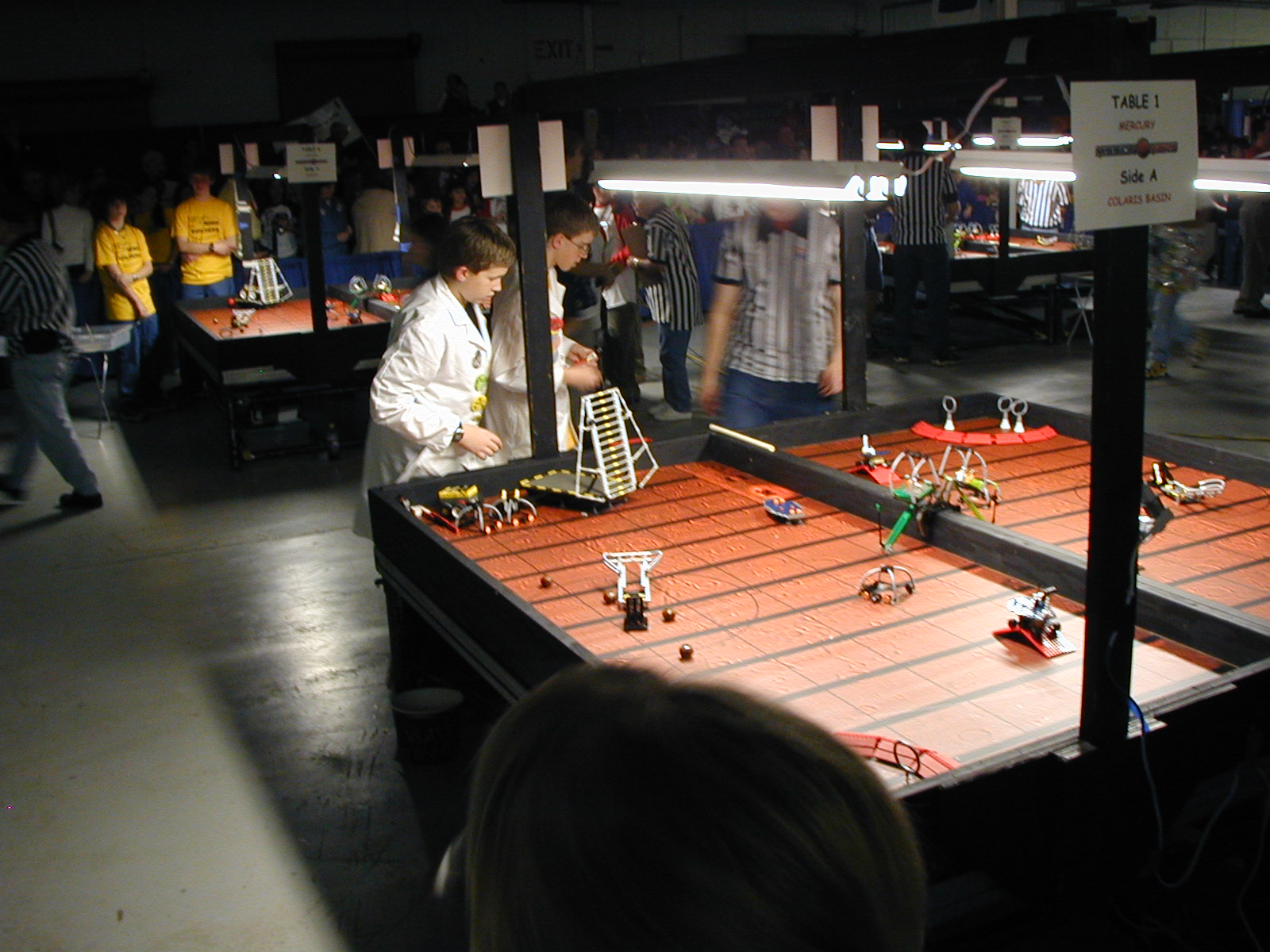Mission Mars on:
[Wikipedia]
[Google]
[Amazon]
Mission Mars was the 2003-04 challenge theme of
 All the missions were themed after aspects of Mars exploration:
* Exit the Tetrahedron Base - 39 points
* Launch The Sample Canister - up to 39 points
* Clear The Solar Panel - up to 43 points
* Connect The 180° and 90° Habitation Modules - up to 49 points
* Complete The Alliance Habitation Module - 43 points for each team
* Free The Rover - up to 43 points
* Move Ice Cores to base - up to 49 points
* Move Boulders Into The Launch Circle - up to 14 points each (up to 56 points)
* All Terrain Vehicle Test - 39 points
All the missions were themed after aspects of Mars exploration:
* Exit the Tetrahedron Base - 39 points
* Launch The Sample Canister - up to 39 points
* Clear The Solar Panel - up to 43 points
* Connect The 180° and 90° Habitation Modules - up to 49 points
* Complete The Alliance Habitation Module - 43 points for each team
* Free The Rover - up to 43 points
* Move Ice Cores to base - up to 49 points
* Move Boulders Into The Launch Circle - up to 14 points each (up to 56 points)
* All Terrain Vehicle Test - 39 points
FIRST Lego League
The ''FIRST'' LEGO League Challenge (formerly known as ''FIRST'' LEGO League) is an international competition organized by '' FIRST'' for elementary and middle school students (ages 9–14 in the United States and Canada, 9–16 elsewhere).
Each ...
. It revolved around the NASA
The National Aeronautics and Space Administration (NASA ) is an independent agency of the US federal government responsible for the civil space program, aeronautics research, and space research.
NASA was established in 1958, succeeding t ...
missions to Mars with the Spirit
Spirit or spirits may refer to:
Liquor and other volatile liquids
* Spirits, a.k.a. liquor, distilled alcoholic drinks
* Spirit or tincture, an extract of plant or animal material dissolved in ethanol
* Volatile (especially flammable) liquids, ...
and Opportunity
Opportunity may refer to:
Places
* Opportunity, Montana, an unincorporated community, United States
* Opportunity, Nebraska, an unincorporated community, United States
* Opportunity, Washington, a former census-designated place, United States
* 3 ...
rovers.
Project
Teams were tasked with choosing a mission model, researching a question about it, and finding a creative solution. Then teams shared their project with the community and with judges at competition.Gameplay
The table performance portion of Mission Mars is played on a 4 ft by 8 ft field rimmed by wood boards. At competition, two of these fields are placed together to form an 8 ft square. In each -minute match, a team competes on each field with their robot to earn up to 400 points manipulating the mission models. One of the mission models, the ''Alliance Habitation Module'', straddles both fields in the center. This model can earn points for both teams when the two halves are pushed together. The touch penalty objects are four boulders, worth up to 14 points each depending on location. One is removed from the field each time the robot is touched outside of base. Home base was unusual this year; usually base is a square region set in the corner of the field. For Mission Mars, the robot started on a fold-out platform (to emulate the Mars Rovers) sitting in a triangular base.Missions
References
{{FIRST FIRST Lego League games 2003 in robotics